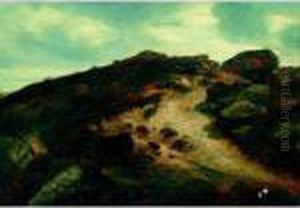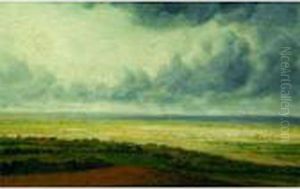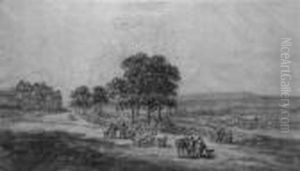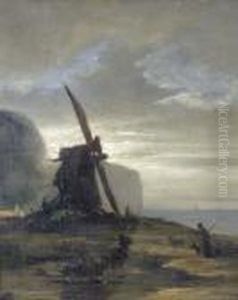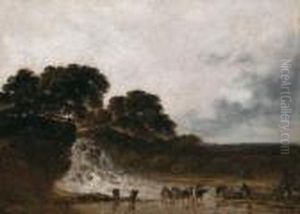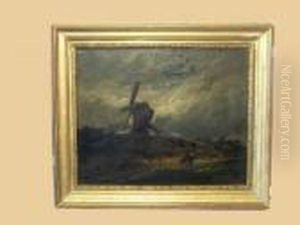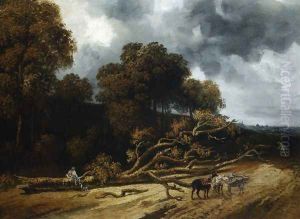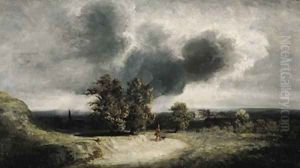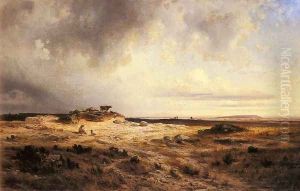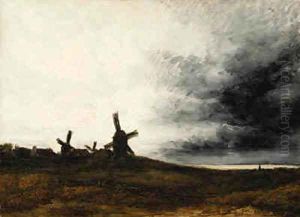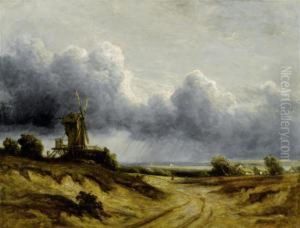Georges Michel Paintings
Georges Michel was a French landscape painter whose work is often associated with the precursors to the Barbizon school. Born on January 12, 1763, in Paris, Michel came from a modest background and was largely self-taught as an artist. His early works were influenced by Dutch landscape painters such as Jacob van Ruisdael, Meindert Hobbema, and particularly by the 17th-century French painter Claude Lorrain. Michel's landscapes are known for their dramatic skies, robust treatment of natural elements, and a certain melancholic atmosphere.
Although he never received the official recognition that his contemporaries enjoyed, Michel's work was highly influential to the next generation of landscape artists. He is often referred to as the 'father of modern landscape painting' in France, as his work represented a transition from the classical landscape traditions of the 18th century to the more realistic and personal approaches that characterized the 19th century.
Michel was active during a turbulent period in French history, which spanned the French Revolution, the Napoleonic Wars, and the Restoration. Despite the political upheavals, he remained dedicated to his art and continued to paint the French countryside, particularly focusing on the region of Montmartre, which at the time was a rural area outside Paris. His paintings often depicted stormy weather and the dramatic play of light and shadow, revealing his fascination with the forces of nature.
Georges Michel's work was largely ignored during his lifetime, and he lived in relative obscurity, struggling financially. It wasn't until after his death on June 7, 1843, that his contributions to landscape painting were fully recognized. Today, Michel's paintings are appreciated for their innovative approach and are held in various museum collections, including the Louvre in Paris. His legacy is seen in the works of the Barbizon school painters, such as Théodore Rousseau and Jean-François Millet, who also found inspiration in the French countryside and worked towards a more naturalistic depiction of landscape.

